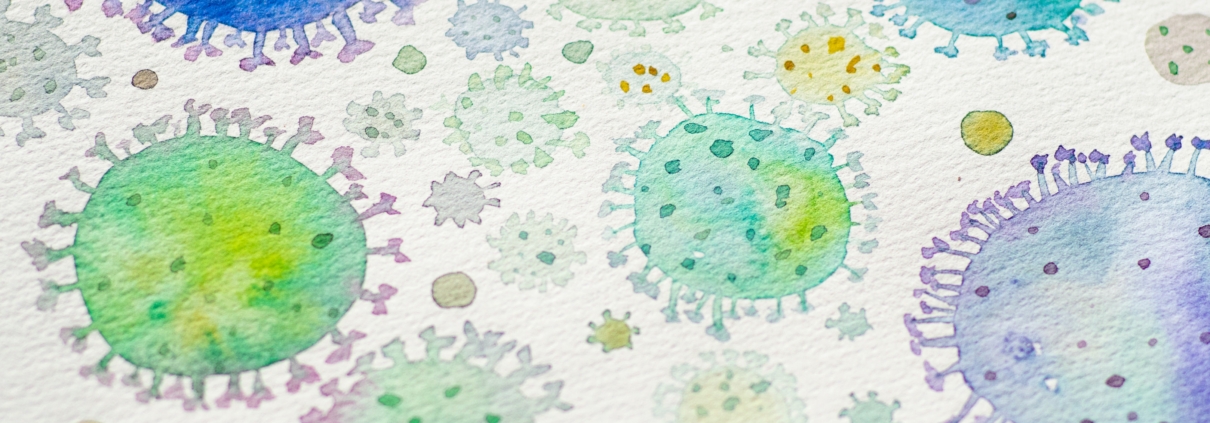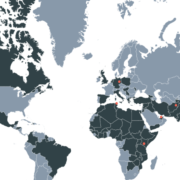A Million Solutions on the Head of a Pin: Utilising Microbes for Peace
As part of the Federation of European Microbiological Societies (FEMS) Congress this July, FEMS2023, Prof. Kenneth Timmis will be giving the prize lecture on the uses of microbes within the pursuit of a more peaceful, just, and sustainable world. His paper ‘Weaponising Microbes for Peace’ is available online.
The interdependence and interlocking nature of the global life-supporting ecosystem is well documented. Likewise, our own bodies’ symbiotic relationship with a whole host of microbiota is becoming well understood. However, a less-considered potential advantage for humanity, is the role that microbes can play in the field of peace & justice; until now.
“Weaponising Microbes for Peace” (Anand, Hallsworth, Timmis, et al.) is an academic paper published in Microbial Biotechnology, which identifies a number of areas in which microbes can, and in the near-future could, provide a significant boost to providing better outcomes for people and planet. This is based on the position that, now and in the future, conflicts will be related to resource deficits: whether this is food, water, or arable land. Microbes can help address many of these resource deficits.
The authors note that “ ‘microbes’ and ‘peace’ are not terms that are usually associated with one another”, but go on to identify 11 separate but interlocking areas in which they think that microbial technologies could play an important role. These range from helping to alleviate hunger, to increasing productive farmland stocks, to clean water and health coverage; deforestation and ecological destruction, pollution, limited access to education; and more.
Food and farming
From suboptimal crop yields to blights and disease, a lack of food is a known multiplier for conflict risk. However, as the authors of the paper note, leveraging microbes to (for example) provide an organic boost to the fertility of soil – compared to using chemical fertilisers – would help alleviate pressure on fragile food systems. Other innovations could include augmenting existing food supplies and systems with long-lasting and nutrient dense fermented foods; or indeed providing people with extra microbiota to supplement their existing gut flora and so help alleviate malnutrition.
The authors also point out that with a lack of access to protein from farmed animals, more and more people around the world are turning to alternative sources: namely ‘bushmeat’. This is a catch all term for non-farmed animals, which have been the source of several zoonotic pathogens jumping to humans: for example HIV, Ebola, Covid; and Monkeypox. Using microbe-based protein sources not only cuts out this risk, but also increases access to more nutritious food supplies.
WASH
Approximately half of the world’s population do not have access to safe sanitation, and one in three people have no or inadequate access to clean water. Here, report Anand (et al.), microbial technologies could have a huge role in non-chemical water purification, and in helping to filter out airborne pollutants from waste as is breaks down. The authors point out that even chemical pollution can be treated via microbial technologies: for example using mycelia to filter out metal and metaloid pollution, or 2-G desalination cells to purify brackish or seawater for human consumption.
Energy, poverty, and overcrowding
On a more strategic level, say the authors, microbes and microbe-based technology could be leveraged to help reduce stresses on energy supplies, help alleviate poverty by offering new and accessible sources of work, and decrease the amount of land required for agriculture. For example, the usage of microbes as a cheap and low-input source of protein could reduce reliance on farmed animals, provide new opportunities for local entrepreneurs, or make biofuel systems more efficient.
Grasping the opportunities
The final section of the paper turns to why humans haven’t yet grasped the many opportunities presented by working better with the microbe world. The authors point out that microbes in general suffer from an image problem (perhaps unsurprisingly), with disease-causing organisms taking most of the headlines. In order to fully harness the capabilities of microbiology-led technologies, the authors suggest a campaign by actors within both the microbiology and peace & justice worlds to try and show how useful utilising microbes can be – in order to counter gamophobia, convince the public and policy-makers that the macro biome of the world is supported by its micro biome, and to reveal the potential solutions offered by leveraging microbes.
If you’d like to help contribute to this shift, or if any of the potential solutions outlined in the paper chime in with the mission of your organisation, just reach out to Joseph Shuttleworth (FEMS).
A new toolkit and approach
As Professor Timmis says: “Levelling up and reducing deficits in basic humanitarian services obviously requires political will and money. What is perhaps less emphasised is the need for DIY and the skills transfer needed for this. Money and deficit reduction may give temporary relief but long term sustainable solutions require enabling folk to do things themselves with minimal dependency on others. Of course we know about sanitation and clean water successes, but this also applies to services traditionally and currently provided entirely by highly trained professionals, which makes them expensive and hence exclusive, like healthcare. But a lot of basic healthcare could go DIY, if folk are provided with some basic education and training, and commerce can be incentivised to develop a comprehensive range of simple diagnostics (think lateral flow) for many relevant clinical issues. Not only would DIY facilitate universal access to first-degree healthcare but would also constitute a major contribution to levelling up/social equity in the world.”
Moreover, the behaviour of microbes can be instructive to human society, says Anand et al. “Microbes also experience deficits and engage in warfare, alliances and cooperation”, and we can perhaps glean important insights from observing their behaviour. The authors point particularly to the way that “drastic perturbation” of microbe ecosystems can lead to the development of “resistance traits, [and] strains that can be or become disruptive and dangerous.” It’s not just the interactions between microbes that we should be considering, too, with the link between our gut microbia and our behaviour becoming clear: having a flourishing and healthy gut microbiota can allow us to make more level-headed and reasonable decisions.
The paper concludes with both policy proposals, and a rallying cry: “Let us break the vicious cycle of deficits and misery that promote conflicts, and conflicts that promote deficits and misery… Let us weaponise microbial technologies for peace!”
Check out a conversation between Professor Timmis and Joseph Shuttleworth on Weaponising Microbes for Peace at the link below!
Our thanks to the Federation of European Microbiological Societies (FEMS) for contributing to this piece. If you’d like to hear more from Professor Kenneth Timmis, check out the FEMS podcast with Kenneth Timmis, available here. Prof. Timmis will be speaking at FEMS2023 – more information and tickets are available here.
Photo by Elena Mozhvilo on Unsplash









